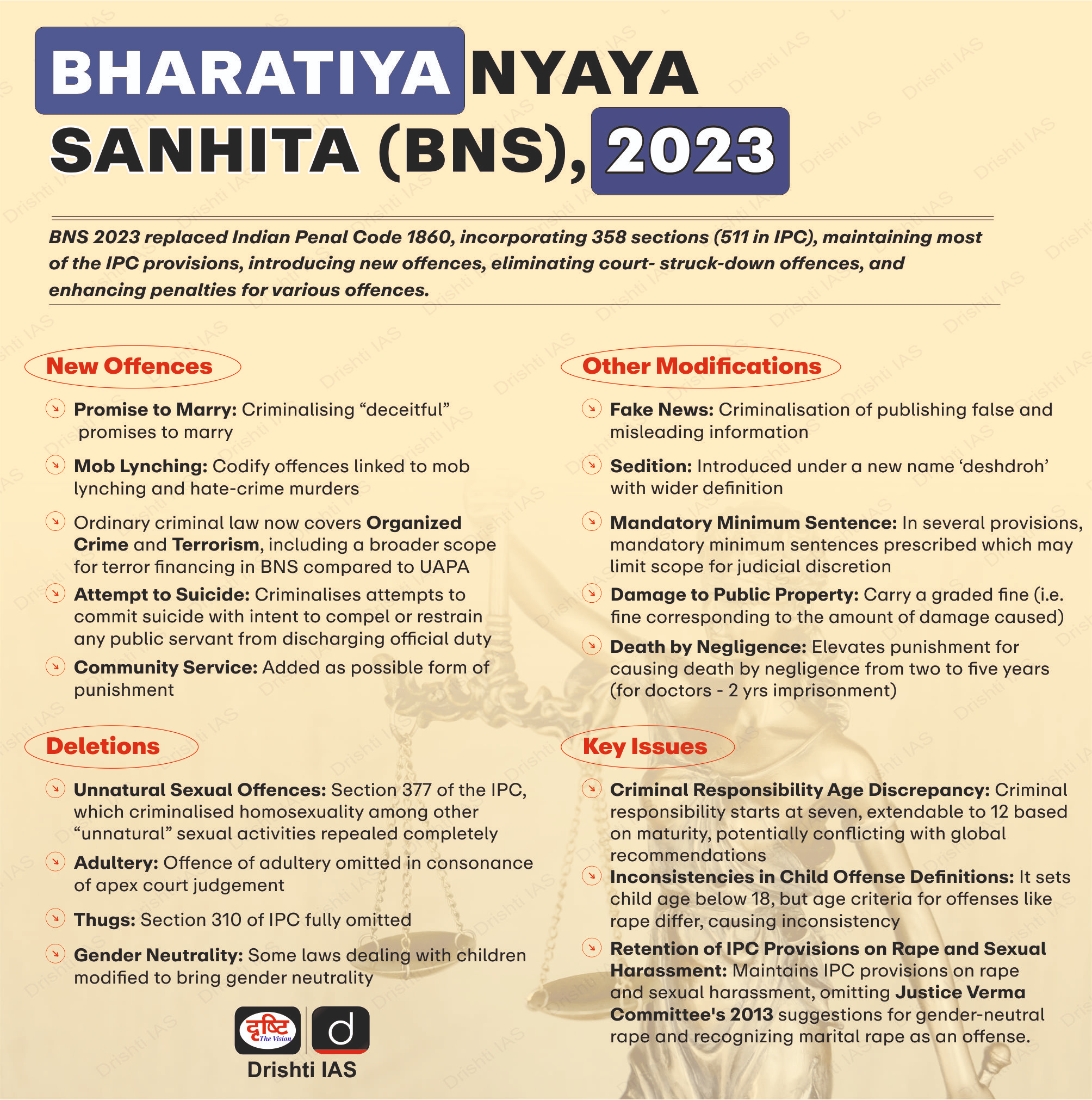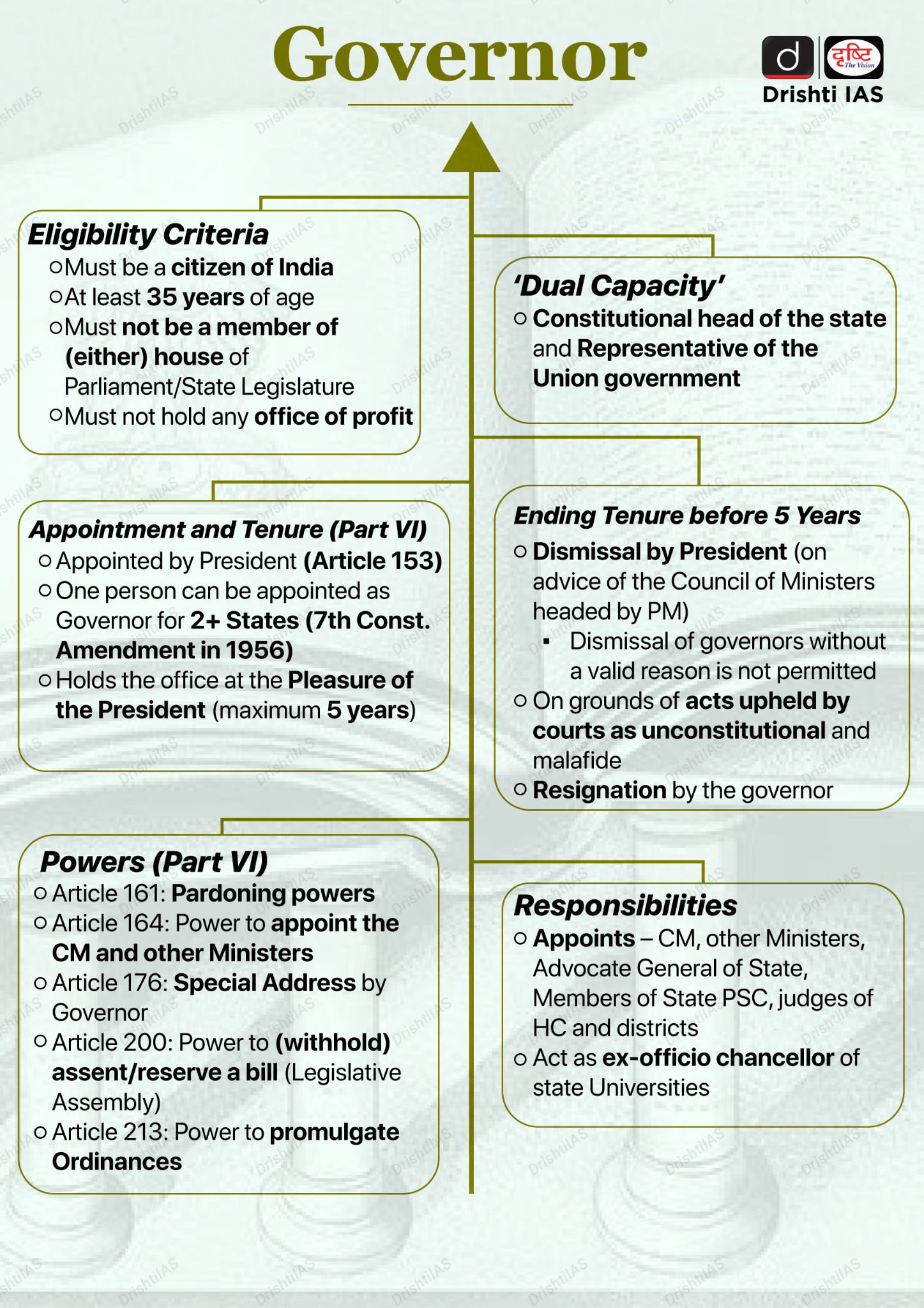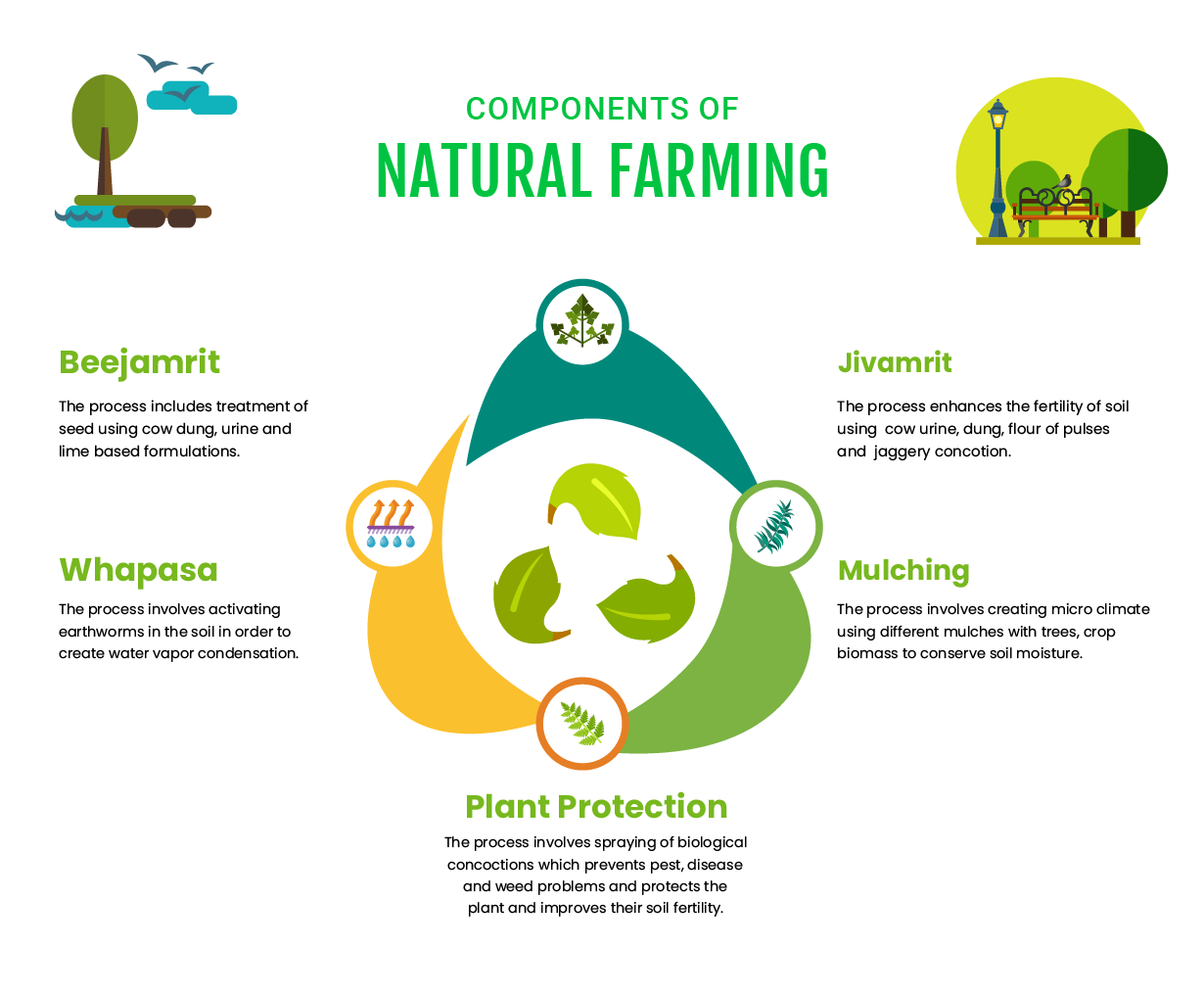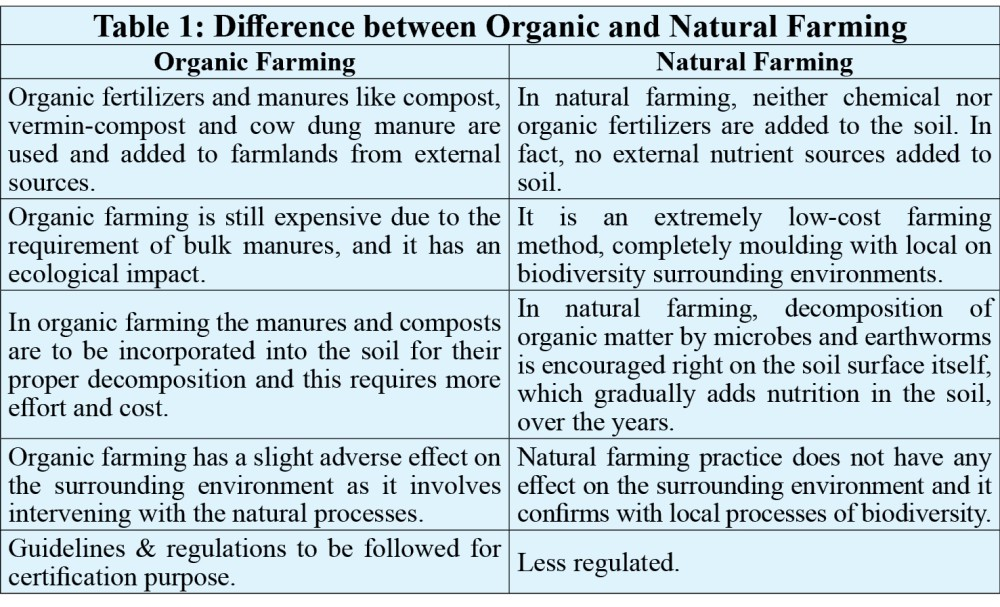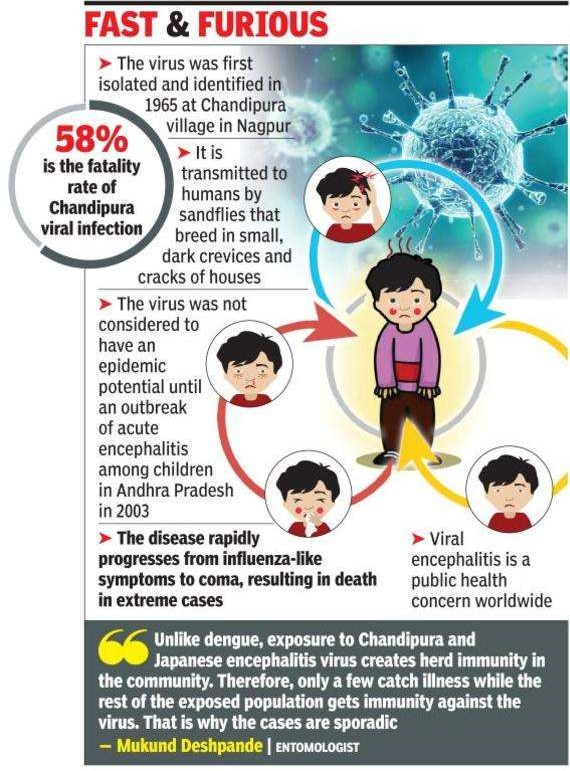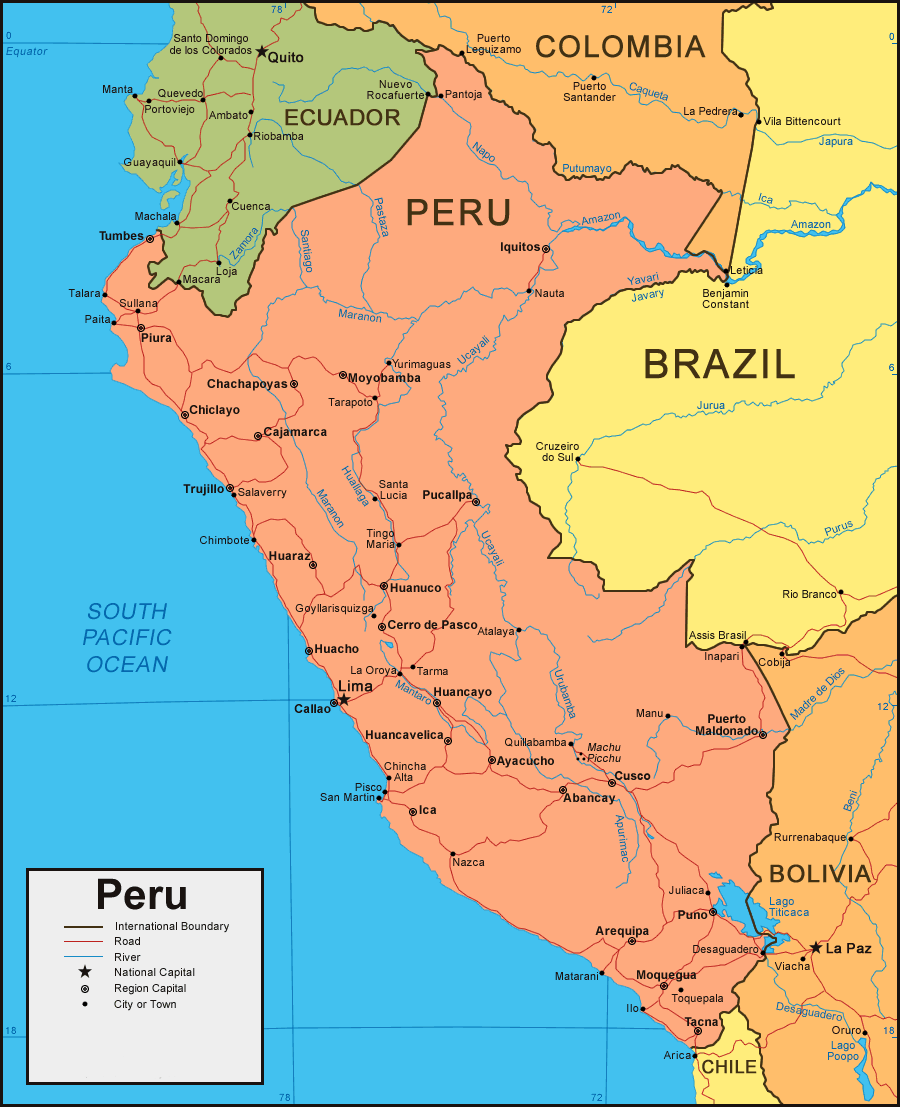Internal Security
5th Positive Indigenisation List
For Prelims: Positive Indigenisation List, Aatmanirbharta, Defence Public Sector Undertakings, Srijan portal, Ease of Doing Business, Tejas, INS Vikrant, Make in India, Article 355, Central Bureau of Investigation
For Mains: India’s defence self-reliance, Internal security framework, Major Security Challenges Confronting India.
Why in News?
The Ministry of Defence (MoD) has recently notified a fifth Positive Indigenisation List (PIL) comprising defence items, aimed at boosting self-reliance and minimising imports and encouraging the domestic defence sector.
What are the Key Highlights of the Fifth Positive Indigenisation List?
- Purpose and Scope: The fifth PIL comprises 346 items aimed at advancing Aatmanirbharta (self-reliance) in defence and reducing import dependence by Defence Public Sector Undertakings (DPSUs).
- It ensures that these items are procured exclusively from the Indian industry, including Micro, Small, and Medium Enterprises (MSMEs) and startups.
- Items include strategically important Line Replacement Units (LRUs), systems, sub-systems, assemblies, sub-assemblies, spares, components, and raw materials.
- Implementation: The list is available on the MoD’s Srijan portal, which provides a platform for DPSUs and service headquarters (SHQs) to offer defence items for indigenisation to private industries.
- DPSUs like Hindustan Aeronautics Limited (HAL), Bharat Electronics Ltd (BEL), Bharat Dynamics Ltd (BDL), and others have initiated processes for issuing Expressions of Interest (EoIs) and Requests For Tender or Proposals (RFPs).
- Impact: The indigenisation of these items is expected to have an import substitution value worth Rs 1,048 crore.
- The initiative provides assurance to the domestic defence industry, encouraging them to develop defence products without the risk of competition from imports.
- Future Goals: The MoD aims to continue expanding the list annually up to 2025, further increasing the number of items to be indigenised.
- This incremental approach supports the long-term goal of achieving greater self-reliance in defence production.
Positive Indigenisation List
- About: The PIL is a list of items that can only be purchased by the Indian armed forces from domestic manufacturers, including private sector or DPSUs.
- The concept was introduced in the Defence Acquisition Procedure (DAP) 2020, focusing on import substitution for major systems, platforms, weapon systems, sensors, and munitions.
- The list includes a diverse range of items crucial for bolstering India's defence capabilities and promoting self-reliance in the defence sector.
- Progress:
- The first PIL was promulgated in August 2020, followed by successive lists, bringing the total to 4,666 items.
- So far, 2,972 items, worth Rs 3,400 crore in import substitution value, have been indigenised.
- These five lists for DPSUs are in addition to the five positive indigenisation lists of 509 items notified by the Department of Military Affairs (DMA). These lists include highly complex systems, sensors, weapons and ammunition.
- The first PIL was promulgated in August 2020, followed by successive lists, bringing the total to 4,666 items.
- Over 36,000 defence items have been offered to the industry for indigenisation, with more than 12,300 items indigenised in the last three years. As a result, the DPSUs have placed orders on domestic vendors to the tune of Rs 7,572 crore.
What is the Need for Indigenisation of Defence in India?
- Import Dependency: India continues to hold the title of the world's largest arms importer, despite ongoing efforts to bolster its defence-industrial base.
-
Between 2019 and 2023, the country accounted for a significant 9.8% of the total global arms imports, reflecting a strategic vulnerability in its defence procurement.
-
- Strategic Autonomy: Heavy reliance on foreign arms imports compromises India's strategic autonomy. By indigenising defence production, India can reduce dependency on external sources and ensure self-reliance in critical defence technologies.
- Dependence on foreign arms can pose risks during geopolitical tensions. Indigenous production enhances national security by ensuring uninterrupted supply and availability of defence equipment during crises.
- A self-reliant defence industry enhances India's political leverage in international relations. It strengthens India's position in global negotiations and defence collaborations.
- Economic Benefits: Indigenisation supports the domestic economy by creating jobs, fostering innovation, and stimulating industrial growth.
- It reduces the outflow of foreign exchange, contributing to economic stability.
- Indigenous production can be more cost-effective in the long run. It reduces the procurement cost, maintenance, and logistical challenges associated with importing arms from abroad.
- Sustainable Development: Indigenisation promotes sustainable development by ensuring that the defence industry grows in harmony with national interests and environmental considerations.
What is the Status of Indigenisation Defence Sector?
- Rise in Exports: In FY 2023-24, defence exports reached a record Rs 21,083 crore (approx. USD 2.63 Billion), showing a 32.5% increase from the previous fiscal year.
- Over the last 10 years, there has been a 31-fold increase in defence exports compared to FY 2013-14.
- The private sector and DPSUs have contributed about 60% and 40% respectively to this growth.
- This growth is attributed to policy reforms, 'Ease of Doing Business' initiatives, and digital solutions provided by the Government to promote defence exports.
- Achievements: The Indian defence sector has seen the production of several advanced systems, including the 155 mm Artillery Gun 'Dhanush', Light Combat Aircraft 'Tejas', INS Vikrant: Aircraft Carrier, and various other platforms and equipment, notably the Advanced Towed Artillery Gun (ATAG) howitzer.
- Reduction in Import Dependency: The expenditure on foreign defence procurement has decreased from 46% to 36% over the past four years, demonstrating the impact of indigenisation efforts in reducing reliance on imports.
- Growth in Domestic Procurement Share: The share of domestic procurement in total defence procurement has risen from 54% in 2018-19 to 68% in the current year, with 25% of the defence budget allocated for procurement from private industry.
- Value of Production: The value of production by public and private sector defence companies has increased from Rs 79,071 crore to Rs 84,643 crore in the past two years, reflecting significant growth in the sector's capacity and output.
What are the Initiatives Related to Indigenisation in the Defence Sector?
- Defence Procurement Policy (DPP), 2016: DPP 2016 has introduced the "Buy-IDDM" (Indigenous Designed and Manufactured) Developed category of acquisition and accorded it the top most priority.
- This policy shift is designed to enhance local production capabilities and reduce import dependency.
- Defence Acquisition Procedure (DAP) 2020: It aims to promote Atmanirbhar Bharat Abhiyaan in the defence manufacturing sector. It includes features such as PIL, priority to indigenous procurement, reservation for MSMEs and small shipyards, increased indigenous content, and introduction of new categories to promote 'Make in India' initiative.
-
Additionally, it focuses on indigenisation of imported spares to enhance self-reliance through import substitution.
-
- Industrial Licensing: The licensing process has been streamlined with extended validity, facilitating easier investment in the defence sector.
- Foreign Direct Investment (FDI): The FDI policy now allows up to 74% under the automatic route, promoting foreign investment in defence manufacturing.
- Make Procedure: The "Make" procedure in the Defence Procurement Procedure (DPP) promotes indigenous design, development, and manufacturing of defence equipment.
- It is a key part of the Make in India initiative, involving both public and private sectors to build indigenous capabilities.
- Defence Industrial Corridors: Two corridors, in Uttar Pradesh and Tamil Nadu, have been established to attract investments and build a comprehensive defence manufacturing ecosystem. Investments totaling approximately Rs 6,089 crore have been made in these corridors.
- Innovative and Supportive Schemes:
- Mission DefSpace: Launched to advance space technology for defence applications.
- Innovations for Defence Excellence (iDEX): This scheme, launched in April 2018, supports innovation in defence by engaging start-ups, MSMEs, and research institutions. The 'iDEX Prime' framework, introduced in 2022, offers up to Rs 10 crore in grants for high-end solutions.
- SRIJAN Portal: Launched to facilitate indigenisation, the SRIJAN portal has listed 19,509 previously imported items for local production. To date, 4,006 items have attracted interest from the Indian industry.
- Research and Development (R&D): 25% of the R&D budget is allocated for industry-led R&D, fostering technological advancement and innovation in the defence sector.
|
Drishti Mains Question: Q. Evaluate the progress and achievements of the Positive Indigenisation Lists since their inception. How have these lists influenced India's defence procurement strategy? |
UPSC Civil Services Examination, Previous Year Questions (PYQs)
Prelims
Q. What is/are the recent policy initiative(s)of Government of India to promote the growth of manufacturing sector? (2012)
- Setting up of National Investment and Manufacturing Zones
- Providing the benefit of ‘single window clearance’
- Establishing the Technology Acquisition and Development Fund
Select the correct answer using the codes given below:
(a) 1 only
(b) 2 and 3 only
(c) 1 and 3 only
(d) 1, 2 and 3
Ans: (d)
Indian Polity
Consent of States for CBI Investigations
For Prelims: Central Bureau of Investigation, Federalism, Bharatiya Nyaya Sanhita, Seventh Schedule, Central Vigilance Commission
For Mains: Issues Related to CBI and Recommendations, Institutional Reforms,
Why in News?
The Government of Madhya Pradesh announced that the Central Bureau of Investigation (CBI) would now require written consent from the state government to initiate any inquiry against state officials.
- This move comes amidst a backdrop of several states withdrawing general consent for CBI investigations, prompting discussions about the need for new legislation to define the CBI’s status, functions, and powers.
Why did Madhya Pradesh Mandate Prior Consent for CBI Inquiries?
- This decision considers changes in the Bharatiya Nyaya Sanhita (BNS) and recent consultations with the CBI.
- Also under Section 17A of the Prevention of Corruption Act, 1988, agencies need permission to conduct inquiries against government officials.
- It provides that no enquiry or inquiry or investigation shall be conducted by a police officer into any offence alleged to have been committed by a public servant under the PC Act without prior approval from the appropriate authority.
- Also under Section 17A of the Prevention of Corruption Act, 1988, agencies need permission to conduct inquiries against government officials.
- All previous general consent for any other offences and any consent given by the state government on a case-by-case basis for any other offence will also continue to apply.
- Several states, including Meghalaya, Mizoram, West Bengal, Jharkhand, Kerala, and Punjab, have withdrawn general consent for CBI investigations.
- Implications of Madhya Pradesh's Decision:
- The requirement for written consent could slow down the process of initiating CBI inquiries against state officials.
- It may increase the administrative burden on both the state government and the CBI, potentially affecting the efficiency of corruption investigations.
- The decision reflects a broader trend of states asserting more control over central investigative agencies, impacting the dynamics of federal governance in India.
What are the Key Facts About the Central Bureau of Investigation?
- About: Following recommendations by the Santhanam Committee on Prevention of Corruption (1962–1964), the CBI was officially established in 1963 by a resolution of the Ministry of Home Affairs.
- It derives its investigative powers from the Delhi Special Police Establishment Act, 1946.
- Operates under the Ministry of Personnel, Public Grievances, and Pensions, which falls under the Prime Minister's Office.
- Investigations under the Prevention of Corruption Act, CBI is supervised by the Central Vigilance Commission.
- It acts as the nodal police agency for coordinating investigations with Interpol member countries.
- The director of the CBI is also the Inspector General of Police (IGP) of the Delhi Special Police Establishment (DSPE) and is responsible for the administration of the organisation.
- Appointment of CBI Director: Initially appointed under the DSPE Act, 1946. Following the Supreme Court's recommendations in the Vineet Narain case, the process was revised in 2003.
- Current System, under the Lokpal Act, 2014, a committee comprising the Prime Minister, Leader of the Opposition, and Chief Justice of India (or a Supreme Court Judge) recommends the appointment.
- The Director enjoys a tenure security of two years, extendable up to five years in the public interest.
- In 2021, the President issued two ordinances to extend the tenures of the directors of the CBI and the Enforcement Directorate from two years to up to five years.
- The chiefs of the CBI can now be given three annual extensions, as per the amendments made to the DSPE Act, 1946.
- Legal Framework Governing the CBI's Jurisdiction:
- The CBI operates under the Delhi Special Police Establishment (DSPE) Act, 1946.
- Section 6 of the DSPE Act mandates that CBI officers need state government consent to exercise powers in any state area, excluding Union Territories or railway areas.
- The legal foundation of the CBI is based on Entry 80 of the Union List, allowing the extension of police powers to other States with their permission.
- The CBI, being a force for Union Territories, can only investigate States with their consent, as determined in the Advance Insurance Co. Ltd case in 1970.
- Consent can be either case-specific or general. General consent is usually provided to facilitate investigations into corruption among central government employees within states, as 'police' is Entry 2 in the State List under the Seventh Schedule of the Constitution.
- The CBI operates under the Delhi Special Police Establishment (DSPE) Act, 1946.
-
Primary Functions:
- Anti-Corruption Crimes: Investigates cases under the Prevention of Corruption Act against public officials, central government employees, and public sector undertakings.
- Economic Crimes: Handles major financial scams, economic frauds, bank frauds, cyber crimes, and smuggling of narcotics, antiques, and other contraband items.
- Special Crimes: Investigates serious and organised crimes such as terrorism, bomb blasts, kidnapping for ransom, and mafia-related activities.
- Suo Moto Cases: Can initiate investigations in Union Territories and, with central government authorisation, in states with their consent. The Supreme Court and High Courts can also direct the CBI to investigate crimes anywhere in the country without state consent.
What Issues Highlight the Need for New Legislation for the CBI?
- Need for Clear Legislation: A parliamentary panel in 2023 emphasised the need for new legislation to clearly define the CBI’s status, functions, and powers.
- The current legislative framework complicates the CBI’s ability to conduct investigations due to states' growing reluctance to provide general consent.
- Staffing Issues: There are around 1,700 vacant posts in the CBI against a sanctioned strength of 7,295. Vacancies in executive ranks, law officers, and technical officers are increasing the pendency of cases.
-
The quality of investigations and overall effectiveness of the agency are impacted by these vacancies.
-
-
Transparency in CBI's Functioning: The details of cases registered with the CBI, progress in their investigation, and outcomes are not publicly available. The annual report of CBI is also not accessible to the general public.
- Criticism: The CBI is still guided by the DPSE Act 1946, which hampers its accountability and autonomy. It has been criticised for being politically biased and vulnerable to undue pressure.
- In 2013, the Guwahati HC deemed CBI unconstitutional for lacking statutory backing, but the Supreme Court later stayed the decision. Instances of corruption and nepotism have also been reported.
Way Forward
- A parliamentary panel in 2023 recommended enacting a new law to define the status, functions, and powers of the CBI and to ensure objectivity and impartiality in its functioning. The recommendation came in response to states' growing reluctance to provide general consent, complicating the CBI’s ability to conduct investigations.
- Such legislation could address the ambiguities and challenges currently faced by the CBI in executing its mandate across different states.
- The panel recommended that the Director of CBI should monitor the progress of filling vacancies quarterly. The CBI should reduce dependence on deputations and recruit more permanent staff, particularly for the ranks of inspector of police and deputy superintendent of police.
- CBI should publish case statistics and annual reports on its website. Providing access to information would make CBI's functioning more accountable, responsible, efficient, and transparent.
- The panel suggested that CBI should have a centralised case management system, containing case details and progress. The system should allow tracking of case progress and be accessible to the public.
|
Drishti Mains Question: Q. Evaluate the need for new legislation to clearly define the Central Bureau of Investigation’s status, functions, and powers. |
UPSC Civil Services Examination, Previous Year Question (PYQ)
Mains
Q. The jurisdiction of the Central Bureau of Investigation (CBI) regarding lodging an FIR and conducting a probe within a particular state is being questioned by various States. However, the power of the States to withhold consent to the CBI is not absolute. Explain with special reference to the federal character of India. (2021)
Governance
SC to Examine Governor’s Immunity
For Prelims: Article 361, Governor, Article 153, Judicial review, President, Supreme Court,
For Mains: Constitutional Provisions Related to the Governor, Governor's Immunity against civil and criminal proceedings.
Why in News?
Recently, the Supreme Court (SC) of India agreed to examine the question of immunity to Governors from any kind of criminal prosecution, granted under Article 361 of the Constitution.
- This came after the Chief Justice of India heard a plea from a female Raj Bhavan employee who filed a sexual harassment complaint against the West Bengal Governor.
What are Immunities Provided to the Governor under Article 361?
- Origin of Governer’s Immunity:
- It is linked to the Latin maxim "rex non potest peccare," or “the king can do no wrong”.
- During the Constituent Assembly's discussion on Article 361, member H V Kamath questions the extent of criminal immunity for the President and Governors, particularly regarding the initiation of proceedings against them for criminal acts.
- Despite these concerns, the article was adopted without further debate.
- Immunities under Article 361:
- Non-Answerable to Courts: Article 361(1) states that the President or the Governor of a State is not answerable to any court for the exercise of their powers and duties, or for any act done in the exercise of those powers and duties.
- Article 361 is an exception to Article 14 (Right to Equality).
- Protection from Criminal Proceedings: Under Article 361(2), no criminal proceedings whatsoever shall be instituted or continued against the President, or the Governor of a State, in any court during his term of office.
- No Arrest: Under Article 361(3), no arrest or imprisonment processes can be issued against the President or Governor during their term of office.
- Protection from Civil Proceedings: Under Article 361(4), no civil lawsuits can be filed against the President or Governor of a State during their term of office for any personal acts until two months after giving written notice.
- The notice must include the nature of the proceedings, the cause of action, the party filing the lawsuit, and the relief being sought.
- Non-Answerable to Courts: Article 361(1) states that the President or the Governor of a State is not answerable to any court for the exercise of their powers and duties, or for any act done in the exercise of those powers and duties.
How have the Courts Interpreted Article 361?
- Dr SC Barat And Anr vs. Hari Vinayak Pataskar Case, 1961: In this, a distinction was made between the Governor's official and personal conduct. While complete immunity is granted for official actions, civil proceedings can be initiated with the prior notice of 2 months for the Governor’s actions.
- Rameshwar Prasad vs. Union of India Case, 2006: The Supreme Court acknowledged the Governor's “complete immunity” under Article 361(1) for constitutional actions but allowed judicial scrutiny for malafide actions.
- This case established that while official actions are protected, there are mechanisms for accountability.
- Madhya Pradesh High Court, 2015: In the Vyapam scam case, the court ruled that Governor Ram Naresh Yadav had “absolute protection” under Article 361(2) from malicious publicity while in office.
- His name was removed from the investigation to prevent undue legal harassment, maintaining the integrity of the office.
- State of UP vs. Kalyan Singh Case, 2017: The Supreme Court held that Kalyan Singh, then Governor of Rajasthan, was entitled to immunity under Article 361 while in office. Charges related to the Babri Masjid demolition would proceed once he ceased to be Governor, reinforcing the protection of the Governor’s duties and dignity.
- Telangana High Court Judgment (2024): In this, HC observed that “there is no express or implicit bar in the Constitution which excludes the power of judicial review in respect of an action taken by the Governor”.
- Further, the court stated that Article 361 immunity is personal and does not exclude judicial review.
Note:
- The US Supreme Court recently ruled that former President Donald Trump, like other former presidents, is granted "absolute immunity" from criminal prosecution for actions taken in an official capacity, but this immunity does not extend to unofficial or personal actions.
What are the Recommendations Regarding Reforms in the Office of the Governor?
- Sarkaria Commission (1988):
-
The Governor should be appointed by the President after consulting the Chief Minister of the respective state.
-
The Governor should be an individual of eminence in public life and should not belong to the state where they are appointed.
-
Governors should not be removed before the completion of their term, except under rare and compelling circumstances.
-
The Governor should serve as a bridge between the Centre and the state, rather than acting as an agent of the Centre.
-
Discretionary powers should be exercised sparingly and judiciously, avoiding any actions that might undermine the democratic process.
-
-
Venkatachaliah Commission or National Commission to Review the Working of the Constitution (NCRWC) (2002):
- The appointment of Governors should be entrusted to a committee comprising the prime minister, the home minister, the speaker of the Lok Sabha and the chief minister of the concerned state.
- The governors should be allowed to complete their five-year term unless they resign or are removed by the President on the grounds of proven misbehaviour or incapacity.
- The central government should consult the Chief Minister before taking any action to remove the governor.
- The Governor should not interfere in the day-to-day administration of the state.
- He should act as a friend, philosopher and guide to the state government and use his discretionary powers sparingly.
- Punchhi Commission (2010):
-
The Commission recommended the deletion of the phrase “during the pleasure of the President” from the Constitution, which suggests that a Governor can be removed at the will of the central government.
-
It proposed that a Governor should only be removed by a resolution of the state legislature, thereby ensuring greater stability and autonomy for states.
-
What are the Constitutional Provisions Related to the Governor?
- Article 153: There shall be a Governor for each state. A single person can be appointed as the Governor for two or more states (recommended by the Sarkaria Commission).
- The Governor is appointed by the President and is a nominee of the Central Government.
- Dual Role: It acts as the constitutional head of the state, bound by the advice of the Council of Ministers (CoM) and functions as a vital link between the Union Government and the State Government.
- Articles 157 and 158: Specify the eligibility requirements for the post of Governor.
- Article 161: The Governor has the power to grant pardons, reprieves, etc.
- Article 163: There is a Council of Ministers with the Chief Minister at the head to aid and advise the Governor in the exercise of his functions, except in some conditions where discretion is allowed.
- Article 164: The Governor appoints the Chief Minister and other Ministers.
- Article 200: The Governor assents, withholds assent, or reserves the bill for the consideration of the President passed by the Legislative Assembly.
- Article 213: The Governor may promulgate ordinances under certain circumstances.
Read more: Governor, The Governor's Role: Challenges and Reform Proposals, Governors in the Limelight: Calls for Reform in India, Governor’s Role in State Legislature
|
Drishti Mains Question: Examine the necessity of re-evaluating the governor’s immunity provisions under Article 361 of the Indian Constitution. |
UPSC Civil Services Examination, Previous Year Questions (PYQ)
Prelims
Q. Which of the following are the discretionary powers given to the Governor of a State? (2014)
- Sending a report to the President of India for imposing the President’s rule
- Appointing the Ministers
- Reserving certain bills passed by the State Legislature for consideration of the President of India
- Making the rules to conduct the business of the State Government
Select the correct answer using the code given below:
(a) 1 and 2 only
(b) 1 and 3 only
(c) 2, 3 and 4 only
(d) 1, 2, 3 and 4
Ans: (b)
Mains
Q. Whether the Supreme Court Judgment (July 2018) can settle the political tussle between the Lt. Governor and elected government of Delhi? Examine. (2018)
Q. Discuss the essential conditions for exercise of the legislative powers by the Governor. Discuss the legality of re-promulgation of ordinances by the Governor without placing them before the Legislature. (2022)
Important Facts For Prelims
National Flag Day
Why in News?
India's National Flag Day commemorates the adoption of the Indian national flag on 22nd July 1947, by the Constituent Assembly, a few days before the country attained Independence from the British on 15th August 1947.
What is National Flag Day?
- About:
-
On 22nd July 1947, the Constituent Assembly of India, chaired by Dr. Rajendra Prasad, adopted the National Flag.
-
The National Flag symbolises national pride, unity, and the struggle for freedom, and is a tribute to the sacrifices of freedom fighters.
-
-
Resolution and Significance:
-
Pandit Jawaharlal Nehru moved the Resolution, stating, "Resolved that the National Flag of India shall be horizontal tricolour of deep Saffron (Kesari), white and dark green in equal proportion.
-
In the centre of the white band, there shall be a Wheel in navy blue to represent the Charkha. The design of the Wheel shall be that of the Wheel (Chakra) which appears on the abacus of the Sarnath Lion Capital of Asoka.
-
The diameter of the Wheel shall approximate to the width of the white band. The ratio of the width to the length of the Flag shall ordinarily be 2:3.
-
-
The assembly unanimously adopted the motion, marking the end of British rule and affirming India's commitment to freedom and future prosperity.
-
What are the Major Laws Governing the National Flag?
- About:
- The hoisting/use/display of the Indian National Flag is governed by the Prevention of Insults to National Honour Act, 1971 and the Flag Code of India, 2002.
- Flag Code of India, 2002:
-
Provisions:
- Whenever the National Flag is displayed, it should occupy the position of honour and should be distinctly placed.
- A damaged or dishevelled Flag shall not be displayed and shall be destroyed as a whole privately.
- The two sanctioned methods to dispose of the Tricolour are either burying or burning. Dignity should always be maintained while disposing of the national flag.
- The Flag should not be flown from a single masthead simultaneously with any other flag or flags.
- The Flag should not be flown on any vehicle except of the dignitaries mentioned in Section IX of Part Ill of the Flag Code, such as President, Vice-President, Prime-Minister, Governors etc.
- No other flag or bunting should be placed higher than or above or side by side with the National Flag.
- A member of the public, a private organisation or an educational institution may hoist/display the National Flag on all days and occasions, ceremonial or otherwise, consistent with the dignity and honour of the National Flag.
- Recent Amendments:
- The Flag Code of India, 2002 was amended in 2021 allowing polyester or machine made Flag and again in 2022 allowing flag to be flown day and night.
- The National Flag shall be rectangular in shape. The Flag can be of any size but the ratio of the length to the height (width) of the Flag shall be 3:2.
-
- The Prevention of Insults To National Honour Act, 1971:
- Anyone who, in a public place or visible to the public, disrespects or brings into contempt the Indian National Flag or the Constitution of India through burning, mutilating, defacing, disfiguring, destroying, trampling, or any other act (including spoken or written words), will be punished with up to three years of imprisonment, a fine, or both.
Read more: National Flag of India
UPSC Civil Services Examination, Previous Year Question (PYQ)
Prelims:
Q. Who among the following is associated with ‘Songs from Prison’, a translation of ancient Indian religious lyrics in English? (2021)
(a) Bal Gangadhar Tilak
(b) Jawaharlal Nehru
(c) Mohandas Karamchand Gandhi
(d) Sarojini Naidu
Ans: (c)
Q. What is the number of spokes in the Dharmachakra in the National Flag of India? (2008)
(a) 16
(b) 18
(c) 22
(d) 24
Ans: (d)
Important Facts For Prelims
Programme on Science of Natural Farming
Why in News?
Recently, the "Regional Consultation Program on the Science of Natural Farming” emphasised the importance of natural farming as a sustainable agricultural practice.
- It was announced that farmers who practise natural farming on a portion of their land for 3 years will be eligible for government subsidies.
What is Natural Farming?
- About:
- Natural farming is an agricultural practice that emphasises minimal intervention and the use of natural resources to cultivate crops.
- It seeks to enhance soil health, biodiversity, and ecosystem balance without relying on synthetic fertilisers, pesticides, or herbicides.
- It is largely based on on-farm biomass recycling with major stress on biomass mulching, use of on-farm cow dung-urine formulations; maintaining soil aeration and exclusion of all synthetic chemical inputs.
- Aims and Objectives:
- Preserve natural flora and fauna
- Restore soil health and fertility
- Maintain diversity in crop production
- Efficient utilisation of land and natural resources
- Promote natural beneficial insects, animals, and microbes
- Promotion of local breeds for livestock integration
- Use of natural/local resource-based inputs
- Reduce input cost of agricultural production
- Improve economics of farmers
- Components:
- Current Scenario:
- Several states, including Andhra Pradesh, Gujarat, Himachal Pradesh, Odisha, Madhya Pradesh, Rajasthan, Uttar Pradesh, and Tamil Nadu, have initiated programs to promote natural farming.
- Currently, over 10 lakh hectares of land in India are being used for natural farming.
- Government Schemes:
- Bharatiya Prakritik Krishi Paddhati (BPKP): It is a sub-mission under the Paramparagat Krishi Vikas Yojana (PKVY), which falls within the umbrella of the National Mission on Sustainable Agriculture (NMSA).
- National Mission on Natural Farming
Read more: Plough to Plate: Natural Farming Unleashed, Natural Farming
UPSC Civil Services Examination, Previous Year Question (PYQ)
Prelims
Q.1 How is permaculture farming different from conventional chemical farming? (2021)
- Permaculture farming discourages monocultural practices but in conventional chemical farming, monoculture practices are predominant.
- Conventional chemical farming can cause an increase in soil salinity but the occurrence of such phenomenon is not observed in permaculture farming.
- Conventional chemical farming is easily possible in semi-arid regions but permaculture farming is not so easily possible in such regions.
- Practice of mulching is very important in permaculture farming but not necessarily so in conventional chemical farming.
Select the correct answer using the code given below.
(a) 1 and 3
(b) 1, 2 and 4
(c) 4 only
(d) 2 and 3
Ans: (b)
Q.2 Which of the following is the chief characteristic of ‘mixed farming’? (2012)
(a) Cultivation of both cash crops and food crops
(b) Cultivation of two or more crops in the same field
(c) Rearing of animals and cultivation of crops together
(d) None of the above
Ans: (c)
Mains
Q.1 What are the present challenges before crop diversification? How do emerging technologies provide an opportunity for crop diversification? (2021)
Q.2 How has India benefited from the contributions of Sir M. Visvesvaraya and Dr. M. S. Swaminathan in the fields of water engineering and agricultural science respectively? (2019)
Important Facts For Prelims
Smaller Black Hole in OJ 287 Galaxy
Why in News?
Recently, a study carried out by a group of 32 scientists from 10 countries including India has confirmed the presence of a smaller black hole orbiting a larger black hole in the Galaxy OJ 287. This discovery was made using NASA's TESS satellite.
- It marked the first direct observation of an orbiting black hole pair, supporting previous theories proposed by astronomers.
Note:
- NASA's Transiting Exoplanet Survey Satellite (TESS), launched in April 2018, discovers exoplanets by monitoring the brightness of over 200,000 stars to detect periodic dips caused by planetary transits.
- Black holes are highly dense objects with such strong gravity that they prevent light from escaping, making them challenging to detect.
- They form when a massive star collapses at the end of its life, resulting in a dense entity that significantly warps the surrounding space-time.
- Exoplanets are planets that orbit other stars and are beyond our solar system.
What are the Implications of these Findings?
- Black Hole Growth and Mergers: This discovery suggests that black holes grow by accreting mass and merging, which is crucial for understanding supermassive black hole evolution.
- Accretion Disks and Jet Formation: The interaction of the smaller black hole with the larger one's accretion disk provides insights into jet formation, key to understanding active galactic nuclei (AGN) and galaxy evolution.
- Gravitational Waves and Cosmic Events: The emission of nano-Hertz gravitational waves offers new opportunities to study cosmic events and black hole pair dynamics, aiding in understanding black hole merger rates and galaxy evolution.
- Insights into Dark Matter and Energy: Studying black hole behaviour may provide indirect insights into dark matter and dark energy.

Read More: Exoplanet, Black Hole Gaia BH3
UPSC Civil Services Examination, Previous Year Question (PYQ)
Q. The term ‘Goldilocks Zone’ is often seen in the news in the context of (2015)
(a) the limits of habitable zone above the surface of the Earth
(b) regions inside the Earth where shale gas is available
(c) search for the Earth-like planets in outer space
(d) search for meteorites containing precious metals
Ans: (c)
Rapid Fire
Chandipura Virus Infection
Recently, many children have died of suspected Chandipura virus (CHPV) infection in Gujarat.
- CHPV Infection:
- The CHPV is an arbovirus that belongs to the Vesiculovirus genus in the Rhabdoviridae family.
- CHPV is transmitted by various species of sandflies, such as Phlebotomine sandflies, Phlebotomus papatasi and mosquitoes such as Aedes aegypti (vector for dengue).
- It primarily affects children under 15 years old.
- Complications and Symptoms :
- The virus resides in the salivary glands of these insects and is transmitted through their bites. CHPV can infect the central nervous system, potentially leading to encephalitis, an inflammation of the brain's active tissues.
- Symptoms resemble flu, including fever, body aches, and headache. It can cause altered mental state, seizures, encephalitis, respiratory distress, bleeding tendencies, and anaemia in advanced stages.
- Treatment:
- Currently, there is no specific antiviral treatment or vaccine for CHPV, so care is supportive and symptomatic.
- Epidemiology:
- CHPV was first identified in Chandipura village of Maharashtra in 1965 during a dengue outbreak.
- The infection remains endemic in central India, especially in rural and tribal areas with higher sandfly populations.
- Outbreaks are more frequent during the monsoon season due to increased breeding of sandflies.
Read More: Nipah Virus
Rapid Fire
Mashco Piro Tribe
Recently, the previously uncontacted Mashco Piro tribe emerged in Peru due to encroachment and a search for food and safety.
- The Mashco Piro is the largest uncontacted tribe globally, with over 750 members. They have traditionally lived in isolation in the Amazon rainforest.
- They occasionally interact with the Yine community, sharing ancestry and language, but these contacts pose health risks due to their lack of immunity to diseases.
-
During the 1880s Rubber Boom, rubber barons invaded their territory, enslaving and subjecting them to severe atrocities.
- In 2002, Perú established the Madre de Dios Territorial Reserve to protect them, but it covers only a third of the proposed area.
- Peru:
- Country in Western South America, bordered by Ecuador, Colombia, Brazil, Bolivia, Chile, and the Pacific Ocean.
- It is a megadiverse country with habitats ranging from the Andes mountains to the Amazon Basin rainforest.
- It is influenced by its tropical latitude, mountain ranges, and two ocean currents (Humboldt and El Niño).
- Major Producer: Lithium, lead, zinc, gold, copper, and silver.
Read more: 4,000-year-old Temple in Peru
Rapid Fire
Dyson Spheres
Dyson spheres are hypothetical megastructures built around a star to harness its entire energy output.
- Named after physicist Freeman Dyson, these structures would collect all of a star's radiant energy.
- Detecting a Dyson sphere could indicate a technologically advanced alien civilization that prefers not to communicate.
- Earth receives 1,361 watts per square meter from the sun, a tiny fraction of the sun’s total energy output of 380 billion quadrillion watts per second.
- A Dyson sphere would capture all this energy that otherwise radiates into space.
- The Kardashev Scale is a theoretical framework to measure a civilization's level of technological advancement based on its energy consumption.
- Humanity is currently at Kardashev Type 0.7449, not fully utilising the energy available on Earth.
| Kardashev Type | Energy Consumption (Watts/second) | Description |
| Type I | 10^16 | Harnesses all energy available on its planet |
| Type II | 10^26 | Harnesses all energy from its star |
| Type III | 10^36 | Harnesses energy on a galactic scale |
- While theoretically possible, constructing a Dyson sphere presents immense challenges in terms of resources, engineering, and time.
- Various projects, such as Project Hephaistos, have sought Dyson swarms using data from infrared surveys. While several objects have been identified, most have been ruled out as natural objects.
Read more: Planetary Instability in Twin Star Systems
Rapid Fire
SC gets Two New Judges, First From Manipur
Recently, Justice N Kotiswar Singh and Justice R Mahadevan were appointed judges of the Supreme Court of India.
- Justice Singh is the first judge from Manipur to be appointed to the SC.
- With these appointments, the SC is now at its full sanctioned strength of 34 judges, including the Chief Justice.
- Parliament has the power to make laws, organise jurisdiction, and modify the power, and number of judges of the Supreme Court by an Act.
Judges of the Supreme Court:
- The SC consists of the Chief Justice of India (CJI) and a maximum of 33 other judges.
- The SC Collegium consisting of the Chief Justice and 4 senior-most judges is responsible for judicial appointments.
- Under Article 124(2), Judges are appointed by the President, based on the advice of the Prime Minister and consultation with the CJI and other senior judges.
- There is no minimum age limit for a judge's appointment, and a SC judge serves until they reach the age of 65.
- The salaries, allowances, privileges, leave, and pension of SC judges are determined by Parliament and charged upon the Consolidated Fund of India.
Read more: Appointment of Judges in Supreme Court
Rapid Fire
Minami-Torishima Island
Recently, researchers have uncovered a significant deposit of minerals on the seabed near the remote island of Minami-Torishima in Japan.
- This discovery includes manganese nodules containing enough cobalt and nickel.
- The researchers estimated that the seabed near Minami-Torishima island holds approximately 610,000 metric tons of cobalt and 740,000 metric tons of nickel.
- Both cobalt and nickel are essential components in EV batteries.
- Cobalt is important for EVs as it prevents the cathode from overheating while extending the life of batteries while Manganese contributes 61% of the cathode needs of the batteries.
Minami-Torishima Island:
- Discovered in 1543, Minami-Torishima is a coral atoll in the central Pacific Ocean 1,125 km southeast of Japan.
- It's also about 1,200 km away from the Chichijima Island of the Ogasawara Island group.
- The triangular-shaped island of Minami-Torishima is the summit of a giant seamount rising from the seafloor and is located on the Marcus-Necker Ridge.
- Located at the easternmost edge of Japan, the island is the first in Japan to see the sunrise.
Read more: Hokkaido, Japan’s Garden of Gods
Rapid Fire
Captain Supreetha CT First Woman Officer from AAD Deployed at Siachen
Captain Supreetha C.T., hailing from Mysuru, has made history by becoming the second Indian Army woman officer and the first from the Corps of Army Air Defence to be operationally deployed at Siachen.
- The Siachen Glacier, which is also known as the world's highest battlefield located in the Eastern Karakoram range in the Himalayas. India launched Operation Meghdoot in 1984 to capture the Siachen Glacier in Kashmir from Pakistan, successfully gaining control of the strategically important glacier.
- It is the second-longest glacier in the world's non-polar areas and lies south of the drainage divide separating the Eurasian Plate from the Indian subcontinent. The Nubra River originates from the Siachen Glacier.
- Fedchenko Glacier, located in Yazgulem Range, Tajikistan is the Longest glacier in the World's Non-Polar areas.
- Siachen poses challenges due to its strategic importance, harsh climate and demanding terrain.
- Before Captain Supreetha, Shiva Chouhan was the first female officer to be deployed in Siachen.

